Arcadyan Technology WN4501G-17ARC EZ Connect g 802.11g Wireless USB 2.0 Adapter User Manual
Arcadyan Technology Corporation EZ Connect g 802.11g Wireless USB 2.0 Adapter
User Manual


38 Tesla
Irvine, CA 92618
Phone: (949) 679-8000
EZ Connect g 2.4 GHz 54 Mbps
Wireless USB Adapter
User Guide
The easy way to make all your network connections
October 2004
R01 F1.0

Copyright
Information furnished by SMC Networks, Inc. (SMC) is believed to be accurate and reliable.
However, no responsibility is assumed by SMC for its use, nor for any infringements of patents
or other rights of third parties which may result from its use. No license is granted by
implication or otherwise under any patent or patent rights of SMC. SMC reserves the right to
change specifications at any time without notice.
Copyright © 2004 by
SMC Networks, Inc.
38 Tesla
Irvine, CA 92618
All rights reserved.
Trademarks:
SMC is a registered trademark; and EZ Connect g and EZ Hub are trademarks of SMC
Networks, Inc. Other product and company names are trademarks or registered trademarks
of their respective holders.

i
COMPLIANCES
Federal Communication Commission Interference
Statement
This equipment has been tested and found to comply with the limits for a Class B
digital device, pursuant to Part 15 of the FCC Rules. These limits are designed to
provide reasonable protection against harmful interference in a residential
installation. This equipment generates, uses and can radiate radio frequency
energy and, if not installed and used in accordance with the instructions, may
cause harmful interference to radio communications. However, there is no
guarantee that interference will not occur in a particular installation. If this
equipment does cause harmful interference to radio or television reception, which
can be determined by turning the equipment off and on, the user is encouraged to
try to correct the interference by one of the following measures:
• Reorient or relocate the receiving antenna
• Increase the separation between the equipment and receiver
• Connect the equipment into an outlet on a circuit different from that to which the
receiver is connected
• Consult the dealer or an experienced radio/TV technician for help
FCC Caution: Any changes or modifications not expressly approved by the party
responsible for compliance could void the user’s authority to operate this
equipment. This device complies with Part 15 of the FCC Rules. Operation is
subject to the following two conditions: (1) This device may not cause harmful
interference, and (2) this device must accept any interference received, including
interference that may cause undesired operation.
IMPORTANT NOTE:
FCC Radiation Exposure Statement
This equipment complies with FCC radiation exposure limits set forth for an
uncontrolled environment. This equipment should be installed and operated with a
minimum distance of 20 centimeters (8 inches) between the radiator and your
body. This transmitter must not be co-located or operating in conjunction with any
other antenna or transmitter.
T
his equipment complies with FCC radiation exposure limits set forth for an
u
ncontrolled environment. End users must follow the specific operating
i
nstructions for satisfying RF exposure compliance.
T
his transmitter must not be co-located or operating in conjunction with any othe
r
a
ntenna or transmitter.
S
MC declared that SMC2862W-G is limited in CH1~11 from 2400 to 2483.5 MH
z
b
y specified firmware controlled in USA.
T
his equipment has been SAR-evaluated for use in laptops (notebooks) with sid
e
s
lot configuration.

COMPLIANCES
ii
Wireless 2.4 GHz Band Statements:
As the SMC2862W-G Wireless USB can operate in the 2412-2462 MHz
frequency band it is limited by the FCC, Industry Canada and some other
countries to indoor use only so as to reduce the potential for harmful interference
to co-channel Mobile Satellite systems.
The term “IC:” before the radio certification number only signifies that Industry
Canada technical specifications were met.
Industry Canada - Class B
This digital apparatus does not exceed the Class B limits for radio noise emissions
from digital apparatus as set out in the interference-causing equipment standard
entitled “Digital Apparatus,” ICES-003 of Industry Canada.
Cet appareil numérique respecte les limites de bruits radioélectriques applicables
aux appareils numériques de Classe B prescrites dans la norme sur le matérial
brouilleur: “Appareils Numériques,” NMB-003 édictée par l’Industrie.
Australia/New Zealand AS/NZS 4771
Contact SMC at:
SMC Networks, Inc.
38 Tesla
Irvine, CA 92618
Phone: (949) 679-8000
ACN 066 352010
A.C.N 096 592 442
I
ndustry Canada-RF
O
peration is subject to the following two conditions:
1
) this device may not cause interference and
2
) this device must accept any interference, including interference that may
c
ause undesired operation of the device
T
o prevent radio interference to the licensed service, this device is intended to
b
e operated indoors and away from windows to provide maximum shielding.
E
quipment (or its transmit antenna) that is installed outdoors is subject to
l
icensing.

C
OMPLIANCES
iii
EC Conformance Declaration
The following importer/manufacturer is responsible for making this declaration:
SMC Networks-Spain, S.L.
Edificio Conata II,
Calle Fructuos Gelabert 6-8, 2o, 4a,
08970 - Sant Joan Despi,
Barcelona, Spain.
This RF product complies with R&TTE Directive 99/5/EC. For the evaluation of the
compliance with this Directive, the following standards were applied:
Electromagnetic compatibility and radio spectrum matters (ERM)
• EN300 328-1 (2001-12)
• EN300 328-2 (2001-12)
Electromagnetic Compatibility (EMC) Standard for radio equipment and
services
• EN301 489-1
• EN301 489-17
Safety Test
• EN60950
Intended for use in the following countries:
Austria Belgium Denmark
Finland France Germany
Italy Luxembourg Netherlands
Norway Spain Sweden
Switzerland United Kingdom Portugal
Greece Ireland Iceland

COMPLIANCES
iv
Wichtige Sicherheitshinweise (Germany)
1. Bitte lesen Sie diese Hinweise sorgfältig durch.
2. Heben Sie diese Anleitung für den späteren Gebrauch auf.
3. Vor jedem Reinigen ist das Gerät vom Stromnetz zu trennen. Verwenden Sie
keine Flüssigoder Aerosolreiniger. Am besten eignet sich ein angefeuchtetes
Tuch zur Reinigung.
4. Die Netzanschlu ßsteckdose soll nahe dem Gerät angebracht und leicht
zugänglich sein.
5. Das Gerät ist vor Feuchtigkeit zu schützen.
6. Bei der Aufstellung des Gerätes ist auf sicheren Stand zu achten. Ein Kippen
oder Fallen könnte Beschädigungen hervorrufen.
7. Die Belüftungsöffnungen dienen der Luftzirkulation, die das Gerät vor
Überhitzung schützt. Sorgen Sie dafür, daß diese Öffnungen nicht abgedeckt
werden.
8. Beachten Sie beim Anschluß an das Stromnetz die Anschlußwerte.
9. Verlegen Sie die Netzanschlußleitung so, daß niemand darüber fallen kann.
Es sollte auch nichts auf der Leitung abgestellt werden.
10.Alle Hinweise und Warnungen, die sich am Gerät befinden, sind zu beachten.
11.Wird das Gerät über einen längeren Zeitraum nicht benutzt, sollten Sie es vom
Stromnetz trennen. Somit wird im Falle einer Überspannung eine
Beschädigung vermieden.
12.Durch die Lüftungsöffnungen dürfen niemals Gegenstände oder Flüssigkeiten
in das Gerät gelangen. Dies könnte einen Brand bzw. elektrischen Schlag
auslösen.
13.Öffnen sie niemals das Gerät. Das Gerät darf aus Gründen der elektrischen
Sicherheit nur von authorisiertem Servicepersonal geöffnet werden.
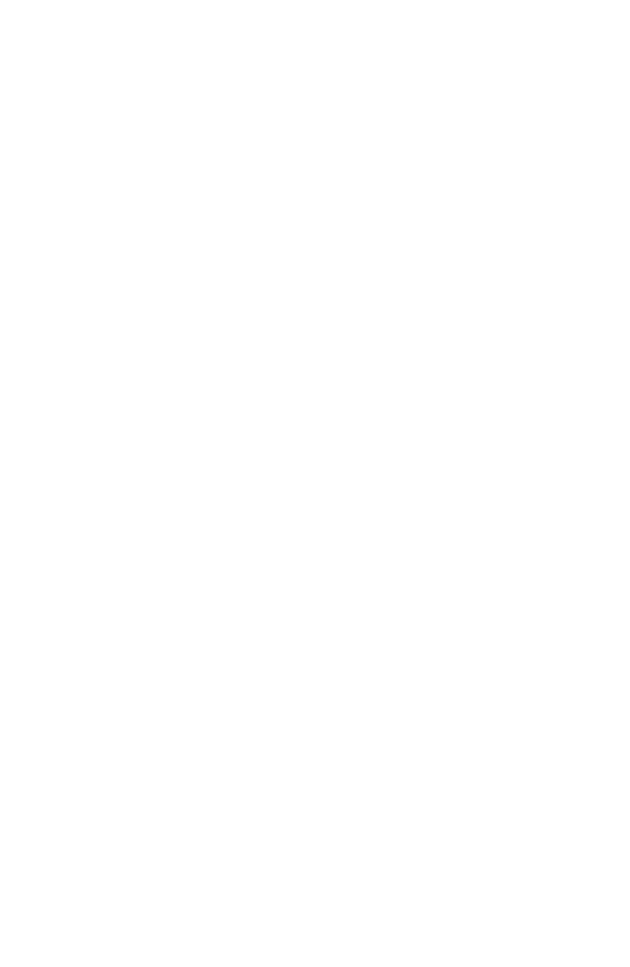
C
OMPLIANCES
v
14.Wenn folgende Situationen auftreten ist das Gerät vom Stromnetz zu trennen
und von einer qualifizierten Servicestelle zu überprüfen:
a. Netzkabel oder Netzstecker sind beschädigt.
b. Flüssigkeit ist in das Gerät eingedrungen.
c. Das Gerät war Feuchtigkeit ausgesetzt.
d. Wenn das Gerät nicht der Bedienungsanleitung entsprechend funktioniert
oder Sie mit Hilfe dieser Anleitung keine Verbesserung erzielen.
e. Das Gerät ist gefallen und/oder das Gehäuse ist beschädigt.
f. Wenn das Gerät deutliche Anzeichen eines Defektes aufweist.
15. Stellen Sie sicher, daß die Stromversorgung dieses Gerätes nach der EN
60950 geprüft ist. Ausgangswerte der Stromversorgung sollten die Werte von
AC 7,5-8V, 50-60Hz nicht über oder unterschreiten sowie den minimalen
Strom von 1A nicht unterschreiten.
Der arbeitsplatzbezogene Schalldruckpegel nach DIN 45 635 Teil 1000
beträgt 70dB(A) oder weniger.
California Proposition 65 Warning
This product or components of this product contains a chemical(s) known to the
State of California to cause cancer and/or birth defects or other reproductive
harm.
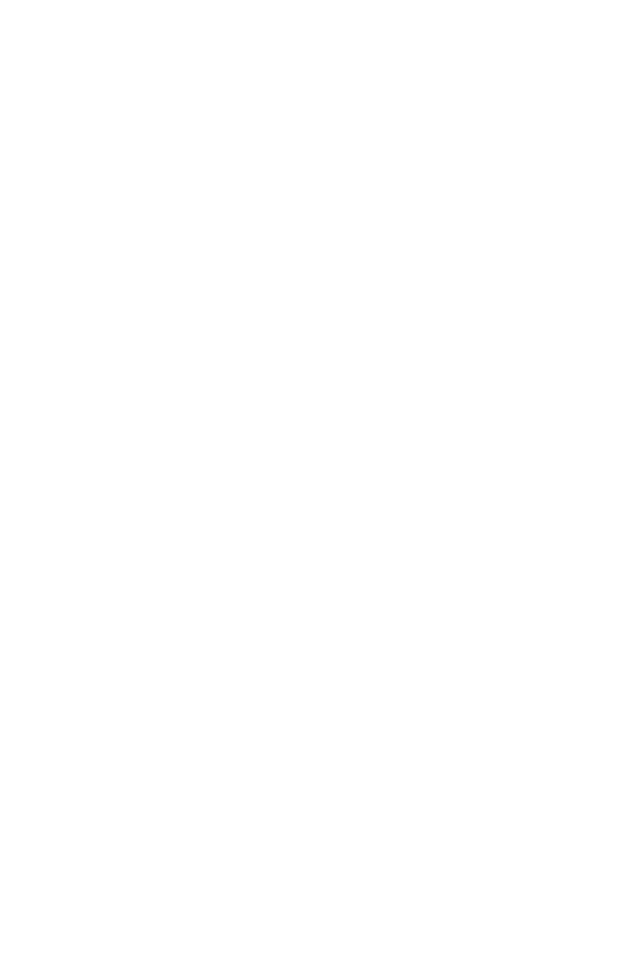
COMPLIANCES
vi
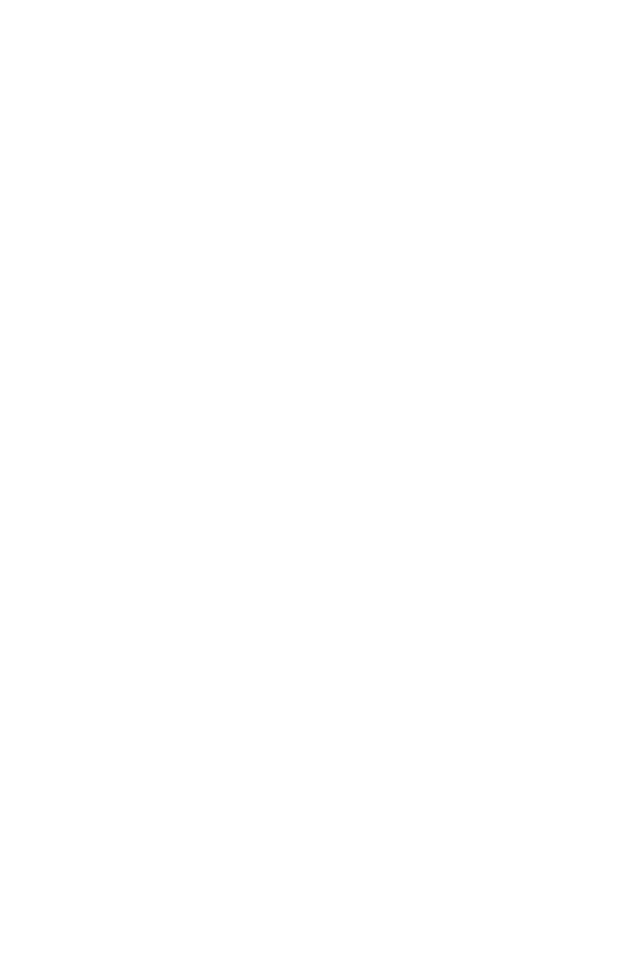
vii
T
ABLE OF
C
ONTENTS
EZ Connect g™ Wireless USB Adapter . . . . . . . . . . . . 1
Features . . . . . . . . . . . . . . . . . . . . . . . . . . . . . . . . . . . . . . . . . . . 1
Applications . . . . . . . . . . . . . . . . . . . . . . . . . . . . . . . . . . . . . . . . 2
System Requirements . . . . . . . . . . . . . . . . . . . . . . . . . . . . . . . . 3
Package Contents . . . . . . . . . . . . . . . . . . . . . . . . . . . . . . . . . . . 3
Hardware Description . . . . . . . . . . . . . . . . . . . . . . . . . . . 4
LED . . . . . . . . . . . . . . . . . . . . . . . . . . . . . . . . . . . . . . . . . . . . . . . 4
Driver and Utility Installation . . . . . . . . . . . . . . . . . . . . . 5
For Windows 2000/XP . . . . . . . . . . . . . . . . . . . . . . . . . . . . . . . . 5
Hardware Installation . . . . . . . . . . . . . . . . . . . . . . . . . . 10
SMC2862W-G Utility . . . . . . . . . . . . . . . . . . . . . . . . . . . 12
Configuration . . . . . . . . . . . . . . . . . . . . . . . . . . . . . . . . . . . . . . 13
Common . . . . . . . . . . . . . . . . . . . . . . . . . . . . . . . . . . . . 14
Security . . . . . . . . . . . . . . . . . . . . . . . . . . . . . . . . . . . . . . 15
Advanced . . . . . . . . . . . . . . . . . . . . . . . . . . . . . . . . . . . . 21
Link Information . . . . . . . . . . . . . . . . . . . . . . . . . . . . . . . . . . . . 23
IP Information . . . . . . . . . . . . . . . . . . . . . . . . . . . . . . . . . . . . . . 25
Site Survey . . . . . . . . . . . . . . . . . . . . . . . . . . . . . . . . . . . . . . . . 27
Version Information . . . . . . . . . . . . . . . . . . . . . . . . . . . . . . . . . 29
Network Configuration and Planning . . . . . . . . . . . . . 30
Network Topologies . . . . . . . . . . . . . . . . . . . . . . . . . . . . . . . . . 30
Ad Hoc Wireless LAN . . . . . . . . . . . . . . . . . . . . . . . . . . . 30
Infrastructure Wireless LANs . . . . . . . . . . . . . . . . . . . . . 31
Setting the Communication Domain . . . . . . . . . . . . . . . . . . . . . 32
Stationary Wireless PCs . . . . . . . . . . . . . . . . . . . . . . . . . 32
Roaming Wireless PCs . . . . . . . . . . . . . . . . . . . . . . . . . . 32
Troubleshooting . . . . . . . . . . . . . . . . . . . . . . . . . . . . . . 34
Adapter Installation Problems . . . . . . . . . . . . . . . . . . . . . . . . . . 34
Network Connection Problems . . . . . . . . . . . . . . . . . . . . . . . . . 35
Specifications . . . . . . . . . . . . . . . . . . . . . . . . . . . . . . . . 36
General Specifications . . . . . . . . . . . . . . . . . . . . . . . . . . . . . . . 36

T
ABLE OF
C
ONTENTS
viii
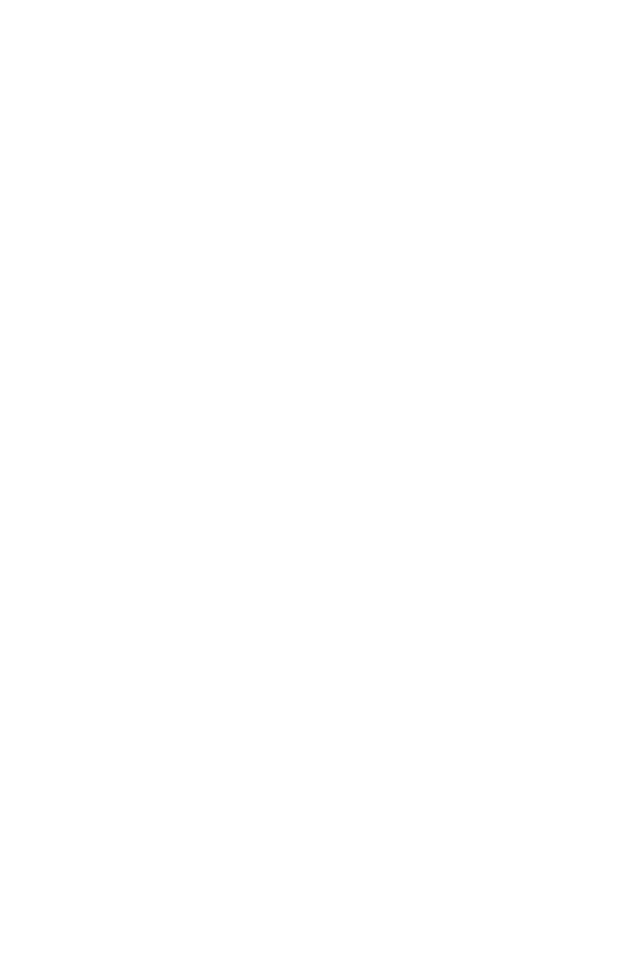
1
EZ CONNECT G™
WIRELESS USB ADAPTER
SMC’s EZ Connect g Wireless USB Adapter (SMC2862W-G) is a
54 Mbps wireless adapter that seamlessly integrates with existing
Ethernet networks to support applications such as mobile users
or temporary conferences. This solution offers a high data rate
and reliable wireless connectivity with considerable cost savings
over wired LANs (which include long-term maintenance overhead
for cabling). Just install enough wireless access points to cover
your network area, plug wireless cards into your notebooks or
computers, and start networking.
Using this card in conjunction with any SMC 802.11g/b wireless
access point, you can create an instant network that integrates
seamlessly with your existing LANs. Moreover, moving or
expanding your network is as easy as moving or installing
additional access points – no wires!
Features
•Backward compatible with the existing 802.11b WLAN
infrastructure
•Enhances your network security with Wired Equivalent
Privacy (WEP) and Wi-Fi Protected Access (WPA)
•Greater flexibility to locate or move networked PCs
•Easy Plug-n-Play installation and user-friendly configuration
•Integrates with or replaces wired LANs at dramatically lower
cost than wired alternatives
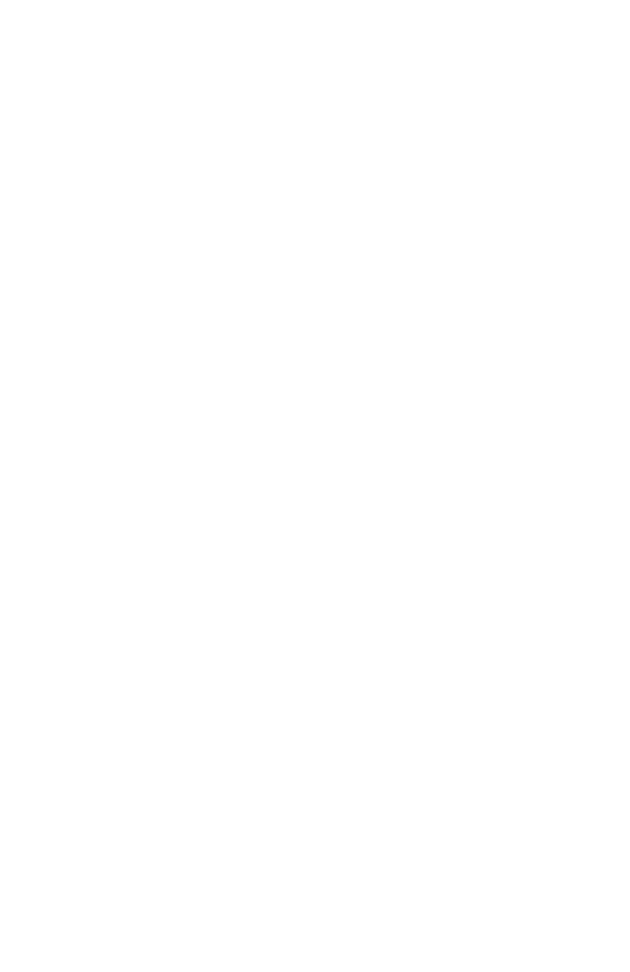
EZ Connect g™ Wireless USB Adapter
2
•Orthogonal Frequency Division Multiplexing (OFDM)
technology provides high speed connection
Applications
EZ Connect wireless products offer fast, reliable, cost-effective
network access for wireless clients in applications such as:
• Remote access to corporate network information
Email, file transfer, and terminal emulation
• Difficult-to-wire environments
Historic or old buildings, asbestos installations, and open
areas where wiring is difficult to employ
• Frequently changing environments
Retailers, manufacturers, and banks who frequently rearrange
the workplace and change location
• Temporary LANs for special projects or peak times
Trade shows, exhibitions, and construction sites that need to
set up for a short time period. Retailers, airline, and shipping
companies who need additional workstations for peak times
• Access to databases for mobile workers
Doctors, nurses, retailers, office workers who need access to
databases while being mobile in a hospital, retail store, office,
campus, etc.
• SOHO (Small Office Home Office) users
SOHO users who need quick and easy installation of a small
network

System Requirements
3
System Requirements
Before you install the EZ Connect g Wireless USB Adapter, check
your system for the following requirements:
•Available 2.0 USB slot
•Windows 2000/XP
•Minimum of 32 MB RAM and 300 MHz CPU
•Minimum of 6 MB of free hard disk space for driver and utility
installation
•Another IEEE 802.11g or 802.11b compliant device installed
in your network, such as the SMC2804WBRP-G Wireless
Cable/DSL Broadband Router with USB Print Server, or
another machine with a wireless adapter, such as the
SMC2802W EZ Connect g 2.4GHz 802.11g Wireless PCI
Card
Package Contents
The EZ Connect g Wireless USB Adapter package includes:
•1 SMC2862W-G EZ Connect g Wireless USB Adapter
•1 EZ Installation Wizard and Documentation CD
•1 Quick Installation Guide
Please register this product and upgrade the product warranty at
http://www.smc.com
Please inform your dealer if there are any incorrect, missing or
damaged parts. If possible, retain the carton and the original
packing materials, in case there is a need to return the product.
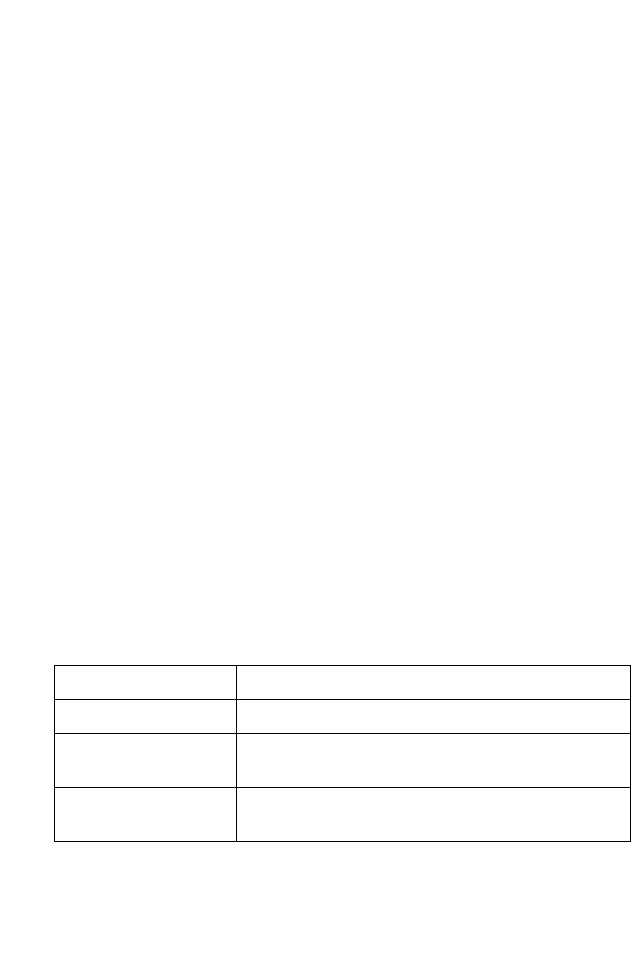
4
HARDWARE DESCRIPTION
The SMC2862W-G adapter provides 54 Mbps connections. It is
fully compliant with the specification of the IEEE 802.11g
standard. It can be installed in any computer running Windows
2000/XP, with a 2.0 USB slot.
LED
The status LED indicator of the SMC2862W-G is described in the
following figure and table.
Figure 1. LED Indicator
Status Description
On (Green) Indicates a valid connection.
Slow Flashing Indicates that the adapter is scanning for
available networks.
Fast Flashing Indicates that the adapter is transmitting or
receiving data.

5
DRIVER AND UTILITY
INSTALLATION
The EZ Installation Wizard and Documentation CD that comes
with the package contains all the software, including the driver
and utility for the SMC2862W-G adapter. Any new or updated
software can be downloaded from the SMC web site at
http://www.smc.com. Also, check the SMC web site for additional
online support.
For Windows 2000/XP
It is recommended that you install the utility and driver software
first, before inserting the adapter into your computer.
You may find that the screen shots here do not exactly match your
version of Windows. This is because these screen shots were
created from Windows XP. Steps for Windows 2000, are similar,
but not identical, to Windows XP.
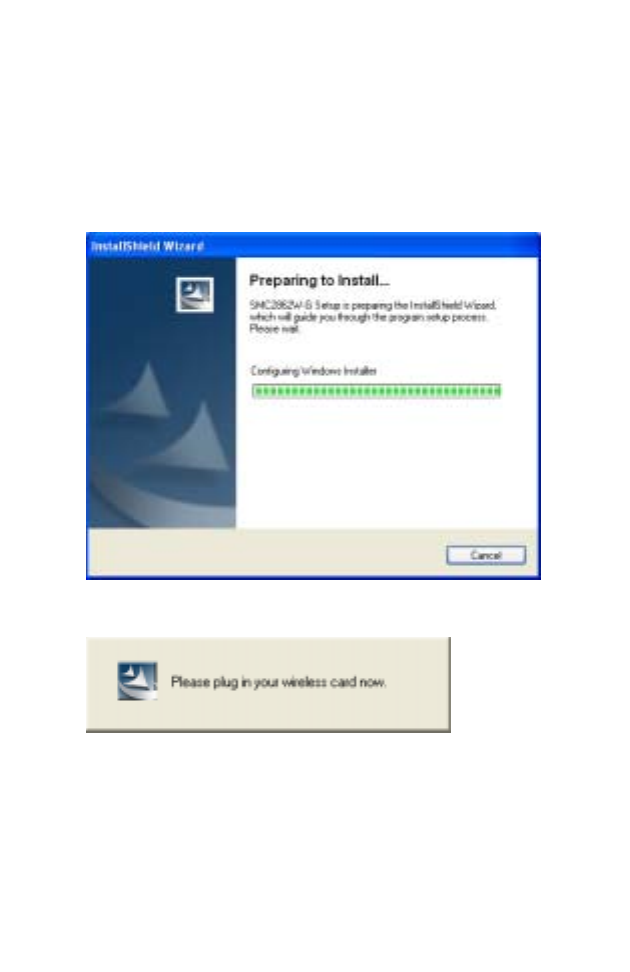
Driver and Utility Installation
6
1. Insert the EZ Installation Wizard CD into your CD-ROM drive.
The CD will auto-run, click on “Install Driver/Utility.”
2. Then the Setup window will automatically appear. Your OS
will start copying files into the system. This may take a few
minutes.
3. Please insert the SMC2862W-G adapter into your computer.
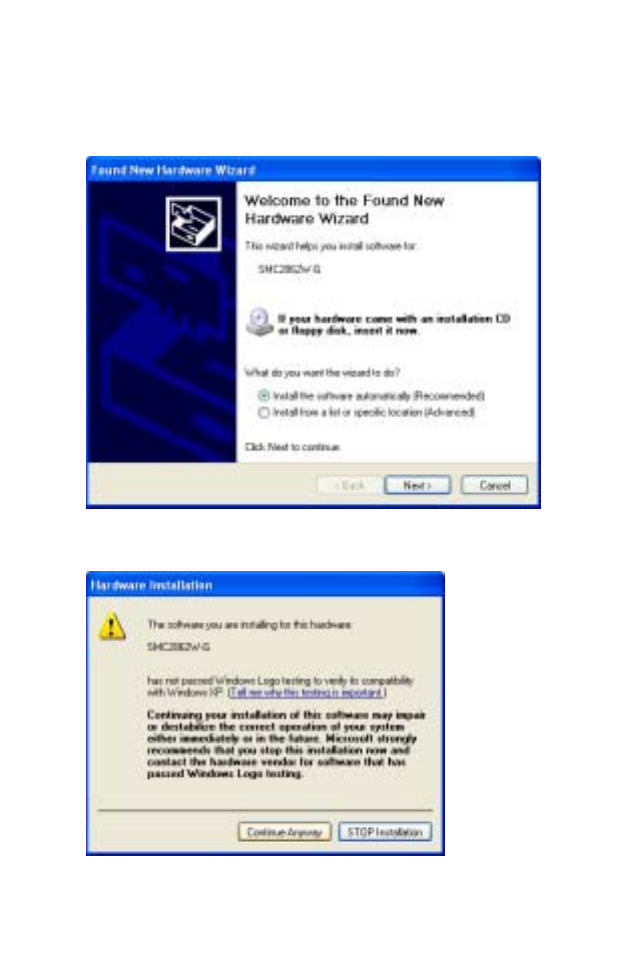
For Windows 2000/XP
7
4. Once the utility has been installed on your system, The Found
New Hardware Wizard window appears, select the “Install the
software automatically” option, and click Next.
5. Click “Continue Anyway” to proceed with the installation.
Note: Do not select “STOP Installation,” as this will cancel the
installation process, and the drivers will not be installed
properly.

Driver and Utility Installation
8
6. For users who are using this adapter outside of the United
States and Canada, the Country Select window will appear.
Please select the country in which you are using the adapter.
Note: This domain configuration applies only to users outside of the
FCC regulatory domain. If you are using this adapter in the
United States and Canada, please skip this step.
7. This window will then appear indicating that the driver has
been installed on your system.
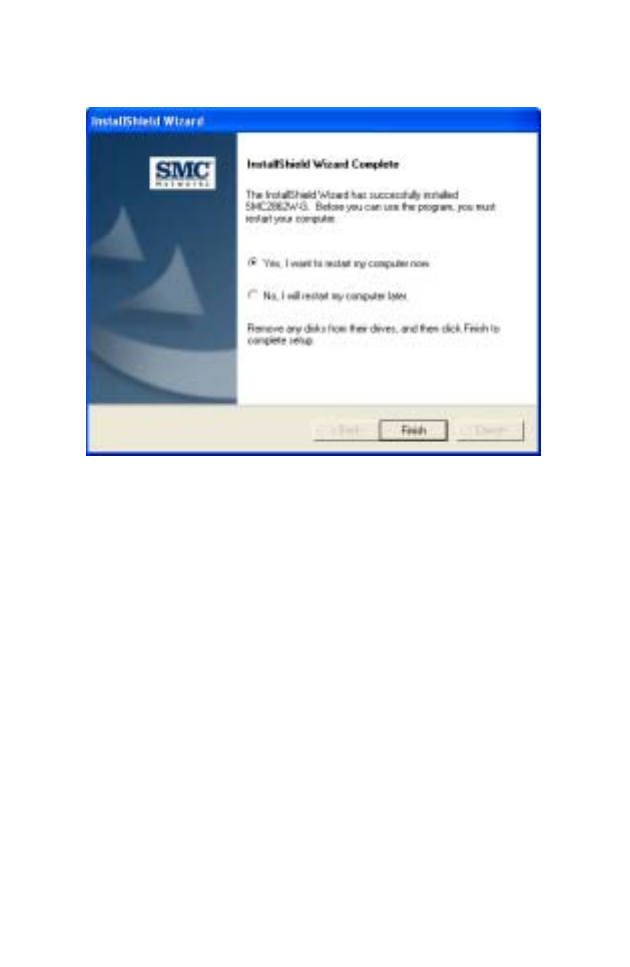
For Windows 2000/XP
9
8. Click Finish to restart your computer.
Your adapter is now ready for use.

10
HARDWARE INSTALLATION
Network cards are sensitive to static electricity. To protect the
card, avoid touching its electrical components, and touch the
ground often to equalize the static charges, before handling the
card.
To insert the card:
1. Find an available 2.0 USB slot in your desktop PC or a laptop.
Figure 2. USB Port
Laptop USB port
Desktop USB port
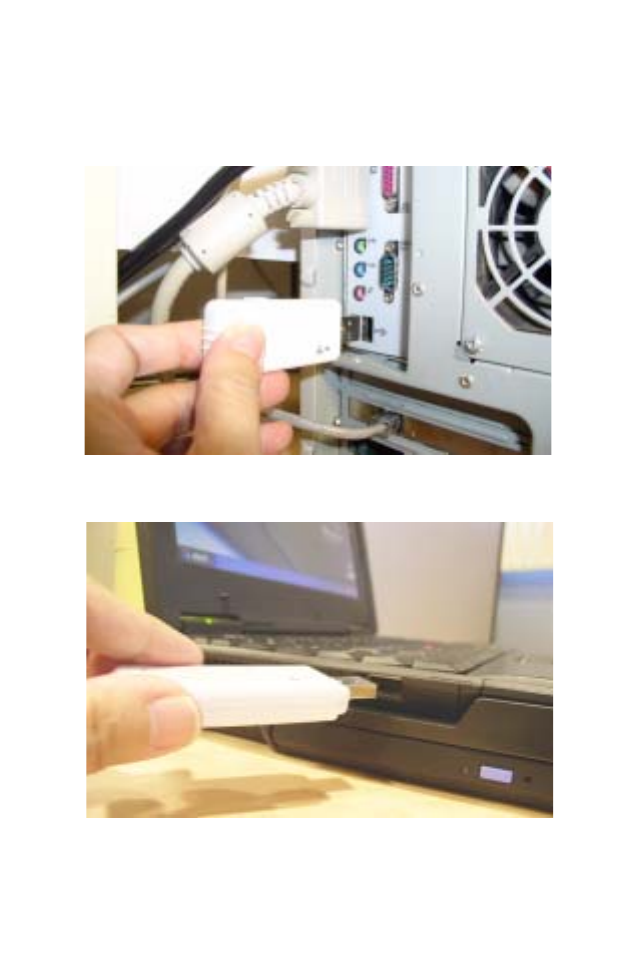
Hardware Installation
11
2. With the adapter’s connector facing the USB slot, and the “EZ
Connect g” label facing up, slide the card completely into the
slot as shown below.
Figure 3. Desktop Installation
Figure 4. laptop Installation
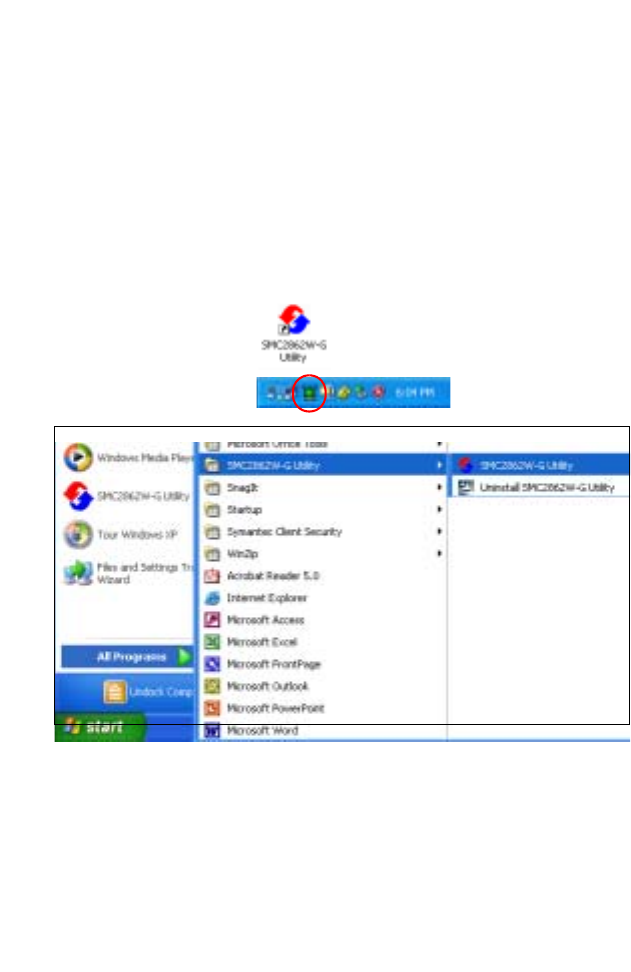
12
SMC2862W-G UTILITY
To communicate with other SMC 802.11g or 802.11b devices,
you need to configure the SMC2862W-G adapter first.
Double-click the SMC2862W-G Utility icon on the desktop to
launch the configuration utility, or you can access it from the Start
menu.
Note that the screen shots were taken from Windows XP and will
not look exactly the same in all operating systems.
Icon on the desktop:
Icon on the toolbar:

Configuration
13
The SMC2862W-G Utility program includes the following five
tabs:
Configuration – Allows you to set parameters for the wireless
adapter.
Link Information – Allows you to view network status.
IP Information – Displays TCP/IP data.
Site Survey – Scans/shows all wireless devices within the
adapter’s signal range.
Version Information – Shows the driver and utility version
information.
At the bottom of the screen, there are three boxes that can be
selected:
• Radio On/Radio Off – This allows you to turn on/off the
transmission/reception of the adapter.
•Help – Click here to display the help file.
•Exit – This closes the configuration utility dialog box.
Configuration
Go to the Configuration tab to set parameters for the
SMC2862W-G adapter.
Select Profile – You can select a proper profile from the
drop-down menu, or specify a profile name for a specific
configuration of parameters.
New – To set up a new profile, click New.
Save – To save a new profile after configuring the settings, click
Save.

SMC2862W-G Utility
14
Delete – To delete a profile, select the profile from the drop-down
menu in the Select Profile field, then click Delete.
Common
Network Name – Input an SSID for the wireless network to which
you want to connect.
Operating Mode – Set the adapter’s operating mode to 802.11
AdHoc for a network environment that does not have an access
point, or to Infrastructure for connections with an access point.
(See “Network Topologies” on page 30 for more information.)

Configuration
15
Transmit Rate – Indicates the data transmission rate. Select an
appropriate transmission speed. Lower speeds will give better
range.
Power Save Mode – To use this funtion, select the Enabled or
Disabled in the Power Save Mode drop-down menu, then click the
Apply Change button.
Security
The Security ON/Security OFF button indicates whether the
security function has been enabled or disabled.
Click the Security ON/Security OFF button to enable the security
function. (Default: Security OFF)

SMC2862W-G Utility
16
Authentication Type – WPA-PSK (Wi-Fi Protected Access-Pre
Share Key) and WEP (Wired Equivalent Privacy) are
implemented in the SMC2862W-G adapter to prevent
unauthorized access.
WPA-PSK
How to set up WPA:
Wi-Fi Protected Access is a standards-based, interoperable
security enhancement that strongly increases the level of data
protection and access control for existing and future wireless LAN
systems. It will be forward-compatible with the upcoming
IEEE 802.11i standard. WPA employs a combination of several
technologies to provide an enhanced security solution for 802.11
wireless networks, including TKIP (Temporal Key Integrity
Protocol) for data protection and 802.1x for authenticated key
management. WPA provides a simple operating mode that uses
just a pre-shared password for network access. The Pre-Shared
Key mode uses a common password for user authentication that
is manually entered on the access point and all wireless clients
on the network.
To use the WPA function, take the following steps:
1. Select Authentication Type, WPA-PSK from the drop-down
menu.
2. Type in the Pre-Shared Key (PSK).
3. Click Apply Change to allow the settings to take effect.
Note: The PSK Passphrase character limit needs to be between 8-63
characters.
Manual Pre-Shared Key supports up to 64-Hex characters. If
there is no authentication server on your SOHO network, you can
issue the Pre-Shared Key to the adapter that is connected to the
access point. Be sure to use the same key for the wireless access
point and the connected adapter.

Configuration
17
For enterprise deployment, WPA requires a RADIUS
authentication server to be configured on the wired network. The
802.1x client and RADIUS server should use an appropriate EAP
type - such as EAP-TLS (Transport Layer Security), EAP-TTLS
(Tunneled TLS), or PEAP (Protected EAP) - for strongest
authentication. Working together, these protocols provide “mutual
authentication” between a client, the access point, and a RADIUS
server that prevents unauthorized users from joining your
network, and also prevents users from accidentally joining a
rogue network. Only when a RADIUS server has authenticated a
user’s credentials will encryption keys be sent to the access point
and client.
Note: To implement WPA on wireless clients requires a
WPA-enabled network card driver and 802.1x client software
that supports the EAP authentication type that you want to use.
Windows XP provides native WPA support, other systems
require additional software. Note that Microsoft now has an
802.1x authentication client for Windows 2000 that you can
download from their web site.

SMC2862W-G Utility
18
WEP
Authentication Mode – Choose Open or Shared.
Default Key – Choose the key for encryption.
Key Type – Select 64-bit encryption, 64-bit encryption (ASCII),
128-bit encryption,or 128-bit encryption (ASCII).
Use Passphrase – Check this box to auto-generate keys for
encryption. First, check this box, then enter a string of characters
into the space. Encryption keys will be generated automatically.
When Key Type is set to 128-bit, only one key will be generated. If
Key Type is set to 64-bit, four keys will be generated. Note that
you must use the same passphrase and default key on all the
other clients in your network.

Configuration
19
How to set up WEP:
If you are transmitting sensitive data across wireless channels,
you should enable Wired Equivalent Privacy (WEP) encryption.
WEP provides a basic level of security, preventing unauthorized
access to the network and encrypting data transmitted between
wireless clients and the access point. WEP uses static shared
keys (fixed-length hexadecimal or alphanumeric strings) that are
manually distributed to all clients that want to use the network.
WEP is the security protocol initially specified in the IEEE 802.11
standard for wireless communications. For more robust wireless
security, the SMC2862W-G provides Wi-Fi Protected Access
(WPA) for improved data encryption and user authentication.
Note: Only one key is needed for WEP to function. However, the
IEEE 802.11 standard specifies that there must be four keys
for each device. For security purposes, the key should be
changed on a regular basis. Multiple keys are supported to
allow the user to change keys with minimal disruption of the
network.
To set up the WEP function, take the following steps:
1. Select 64-bit encryption, 64-bit encryption (ASCII), 128-bit
encryption,or 128-bit encryption (ASCII) in the Key Type field.
2. To automatically generate keys, check the Use Passphrase
box, and type in a string of characters in this field.
3. In the Default Key field, select one key as the default key that
you want to use for encryption.
4. Click Apply Change to allow the settings to take effect.

SMC2862W-G Utility
20
Or
1. Select 64-bit encryption, 64-bit encryption (ASCII), 128-bit
encryption,or 128-bit encryption (ASCII) in the Key Type field.
2. In the Default Key field, select one key as the default key that
you want to use for encryption.
3. Manually type in a string of characters in the corresponding
key number field that you selected in step 2.
4. Click Apply Change to allow the settings to take effect.
Note: When setting up WEP without using the Use Passphrase
function, if the Key Type is set to Hex, only Hexadecimal
characters (range: 0~9 and A~F) can be used. When
encryption is set to 64-bit, a maximum of 10 Hex characters
can be entered in the Key field. When encryption is set to
128-bit, a maximum of 26 Hex characters can be used. If the
Key Type is set to ASCII, and encryption is set to 64-bit, then 5
ASCII characters can be used in the Key field. For 128-bit
encryption, 13 ASCII characters can be used.

Configuration
21
Advanced
RTS Threshold – This sets the packet size threshold at which a
Request to Send (RTS) signal must be sent to the receiving
station prior to the sending station starting communications.
Devices contending for the wireless medium may not be aware of
each other. The RTS/CTS mechanism can solve this problem.
The larger the threshold, the faster the speed.
Fragment Threshold – Sets the minimum packet size that can
be transmitted from the adapter without being fragmented.
Fragmentation can increase the reliability of transmissions
because it increases the probability of a successful transmission
due to smaller frame size. The larger the threshold, the faster the
speed.

SMC2862W-G Utility
22
Preamble Type – The preamble is used to acquire the incoming
signal and synchronize the receiver. If all the clients in your
service area support the short preamble or can automatically set
the preamble type, then setting the preamble on the access point
to short can boost your throughput. (Options: Short & Long, Long,
Short; Default: Short & Long)
Transmit Power – Move the slider bar up and down to select an
appropriate transmission power. Lower power reduces
interference, higher power gives more range.

Link Information
23
Link Information
The Link Information screen displays information of the current
wireless access point to which you are connected.
Network Name – The name of the network to which the adapter
is currently connected with other clients on the network.
Base Station Name ID – The MAC address of the access point
to which this adapter is connected in an infrastructure network. In
an ad hoc network, the Network Name is a random number
generated by the first station that communicates with other clients
on the network.

SMC2862W-G Utility
24
Channel – The channel used to connect with the wireless device.
Current Connection Speed – The data transmission speed.
Link Quality – Shows the link quality of the wireless connection.
Signal Strength – Shows the strength of the connection between
the adapter and the access point.

IP Information
25
IP Information
This screen displays IP Information for your computer. Now that
you have configured your adapter to connect to a wireless
network, your adapter needs to obtain new network settings. By
releasing old IP settings and renewing them with settings from
the access point, you will also verify that you have configured
your adapter correctly. To release network settings click on
Release, then click on Renew to get new IP settings.

SMC2862W-G Utility
26
IP Address Client – Internet address of the computer.
IP Netmask Client – A mask used to determine the subnet for an
IP address.
Gateway – The IP address of the network gateway.
Host Name Client – Your computer name on the network.
Release – Click on this button to release the IP address.
Renew – Click on this button to get a new IP address.

Site Survey
27
Site Survey
Site Survey scans and displays all wireless devices within range.
You can choose one of them to connect to by double-clicking on
an entry.

SMC2862W-G Utility
28
Scan – Click this button to scan for available network
connections.
Network name – Service Set ID. (See “Configuration” on page
13 for details.)
MAC address – The MAC address of the listed wireless devices.
Channel – The radio channel on which the access point
operates. (See “Link Information” on page 23 for details.)
Encryption – The key icon indicates that encryption has been
enabled.
Signal – This shows the signal strength from the adapter to the
listed access points.
Scroll right to see the remainder of the Site Survey screen.
Network Type – This shows the operating mode of the listed
wireless devices.

Version Information
29
Version Information
This screen shows information on the current version of the driver
and the configuration utility program. You can download the latest
firmware from the SMC web site at http://www.smc.com.

30
NETWORK CONFIGURATION
AND PLANNING
SMC’s EZ Connect g Wireless Solution supports a stand-alone
wireless network configuration, as well as an integrated
configuration with 10/100 Mbps Ethernet LANs.
The SMC2862W-G can be configured as:
•Ad hoc - for small groups that only communicate with each
other, without access points
•Infrastructure - for wireless LANs
Network Topologies
Ad Hoc Wireless LAN
An ad hoc wireless LAN
consists of a group of
computers, each equipped
with one wireless adapter,
connected via radio signals
as an independent wireless
LAN. Computers in a
specific ad hoc wireless
LAN must therefore be
configured to the same
radio channel. An ad hoc
wireless LAN can be used
in a SOHO or temporary environment.
Notebook with
Wireless USB Adapter
Notebook with
Wireless PC Card
PC with Wireless
PCI Adapter
Ad Hoc Wireless LAN

Network Topologies
31
Infrastructure Wireless LANs
The SMC 802.11g access point (SMC2870W) can also provide
wireless workstations with access to a wired LAN. An integrated
wired and wireless LAN is called an infrastructure configuration. A
Basic Service Set (BSS) consists of a group of wireless PC
users, and an access point that is directly connected to the wired
LAN. Each wireless PC in this BSS can talk to any computer in its
wireless group via a radio link, or access other computers or
network resources in the wired LAN infrastructure via the access
point.
The infrastructure configuration not only extends the accessibility
of wireless PCs to the wired LAN, but also extends the effective
wireless transmission range for wireless PCs by passing their
signal through one or more access points.
A wireless infrastructure can be used for access to a central
database, or for connection between mobile workers, as shown in
the following figure.
File
Ser v er
Sw i t c h
Desktop PC
Access Point
Wired LAN Extension
to Wireless Adapters
PC w i t h W i r e l ess
USB/PCI Adapter
Notebook with Wireless
USB/PC Car d Ad apt er

Network Configuration and Planning
32
Setting the Communication Domain
Stationary Wireless PCs
The Basic Service Set (BSS) is the communication domain for
each access point. For wireless PCs that do not need to support
roaming, set the domain identifier (SSID) for the wireless card to
the SSID of the access point to which you want to connect. Check
with your administrator for the SSID of the access point to whick
you are connecting.
Roaming Wireless PCs
A wireless infrastructure can also support roaming for mobile
workers. More than one access point can be configured to create
an Extended Service Set (ESS). By placing the access points so
that a continuous coverage area is created, wireless users within
this ESS can roam freely. All wireless adapters and access points
within a specific ESS must be configured with the same SSID and
to the same radio channel.
You can configure the wireless client to connect to a specific
wireless network or to the first available wireless network.
•If you configure the client to connect to a specific wireless
network, the client establishes a radio connection to the AP in
the specified wireless network that provides the best
communications quality. APs in a different wireless network
are ignored.
•If you configure the client to connect to the first available
wireless network (the SSID = ANY), the client establishes a
radio connection to the AP that provides the best
communications quality. Be aware that if there are multiple
wireless networks, the client could connect to an AP that is not
in the network you want to join.

Setting the Communication Domain
33
•In either configuration, the client automatically matches the
radio channel used by the AP.
File
Server
Switch
Desktop PC
Access Point <BSS2>
Notebook with Wireless
PC Card Adapter
Seamless Roaming
<ESS>
Access Point
Switch
<BSS1>
PC with Wireless
USB/PCI Adapter
Notebook with
Wireless USB Adapter

34
TROUBLESHOOTING
Check the following troubleshooting items before contacting
SMC technical support.
Adapter Installation Problems
If your computer cannot find the SMC2862W-G adapter or the
driver software does not install correctly, check the following:
•Make sure the adapter is securely seated in the 2.0 USB slot.
Check for any hardware problems, such as physical damage
to the card’s connector.
•Try the card in another USB slot. If this also fails, test your PC
with another wireless adapter that is known to operate
correctly.
•Make sure your PC is using the latest BIOS.
•If there are other network adapters in the PC, they may be
causing conflicts. Remove all other adapters from the PC and
test the wireless adapter separately.
•If it still does not work, go to “Control Panel” and delete the
adapter from your system. Remove the wireless adapter from
your computer. Restart your computer and reinstall the card
and the driver and utility.

Network Connection Problems
35
Network Connection Problems
If the Link LED on the SMC2862W-G adapter does not light, or if
you cannot access any network resources from your computer,
check the following:
•Make sure the correct software driver is installed for your
operating system. If necessary, try reinstalling the driver.
•Make sure the computer and other network devices are
receiving power.
•The access point you want to connect to may be defective. Try
using another access point.
•Make sure the SSID and security settings of the adapter are
set to the same as the access point to which you are
connecting.
If your wireless station cannot communicate with a computer in
the Ethernet LAN when configured for Infrastructure mode, check
the following:
•Make sure the access point that the station is associated with
is powered on.
•If the connection still fails, change the access point and all the
clients within the BSS to another radio channel.
•For a station with roaming disabled, make sure the SSID is the
same as that used by the access point, or the same as that
used by the access points in the extended service set (ESS).

36
SPECIFICATIONS
General Specifications
Functional Criteria
Data Rate
802.11g: 1, 2, 5.5, 6, 9, 11, 12, 18, 24, 36, 48, 54 Mbps
802.11b: 1, 2, 5.5, 11 Mbps
Operating Range
Up to 350 m (1155 ft)
Radio Signal
Signal Type
Orthogonal Frequency Division Multiplexing (OFDM)
Direct Sequence Spread Spectrum (DSSS)
Modulation Techniques
802.11g (OFDM): BPSK, QPSK, 16-QAM, 64-QAM
802.11b (DSSS): Complementary Code Keying (CCK)
Channel Support
FCC: 1-11
ETSI: 1-13
MKK: 1-14
RF Output Power
16 dBm
Physical Characteristics
Power Consumption
Tx mode: 485mA, Rx mode: 330 mA
Dimensions
84.01 *27.08* 12.00 mm (L*W*H)
Weight
27.5 g

General Specifications
37
Antenna
Built-in antenna
LED Indicators
Network Link
Host Interface
32-bit 2.0 USB interface
Power Voltage
3.3 Volt +/- 5%
Standards Conformance
IEEE 802.11g
IEEE 802.11b
Environmental
Temperature
Operating: 0 to 55 °C (32 to 122 °F)
Storage: -20 to 65 °C (32 to 158 °F)
Humidity
5 to 95% (non-condensing)
Certification
CE Mark
EN50081-1, EN55022 Class B, EN50082-1, IEC 61000-4-2,
IEC 60601-1-2
Safety Compliance
USA: FCC Part 15 Class B
UL1950/CSA22.2 No.950
IEC 60950
Software Drivers
Windows 2000
Windows XP

Specifications
38

38 Tesla
Irvine, CA 92618
Phone: (949) 679-8000
Model Number: SMC2862W
Revision number: E102004-R01 V1.0
FOR TECHNICAL SUPPORT, CALL:
From U.S.A. and Canada (24 hours a day, 7 days a week)
(800) SMC-4-YOU; Phn: (949) 679-8000; Fax: (949) 679-1481
From Europe : Contact details can be found on
www.smc-europe.com or www.smc.com
INTERNET
E-mail addresses:
techsupport@smc.com
european.techsupport@smc-europe.com
Driver updates:
http://www.smc.com/index.cfm?action=tech_support_drivers_downloads
World Wide Web:
http://www.smc.com
http://www.smc-europe.com
FOR LITERATURE OR ADVERTISING RESPONSE, CALL:
U.S.A. and Canada: (800) SMC-4-YOU; Fax (949) 679-1481
Spain: 34-91-352-00-40; Fax 34-93-477-3774
UK: 44 (0) 1932 866553; Fax 44 (0) 118 974 8701
France: 33 (0) 41 38 32 32; Fax 33 (0) 41 38 01 58
Italy: 39 (0) 335 5708602; Fax 39 02 739 14 17
Benelux: 31 33 455 72 88; Fax 31 33 455 73 30
Central Europe: 49 (0) 89 92861-0; Fax 49 (0) 89 92861-230
Nordic: 46 (0) 868 70700; Fax 46 (0) 887 62 62
Eastern Europe: 34 -93-477-4920; Fax 34 93 477 3774
Sub Saharian Africa: 216-712-36616; Fax 216-71751415
North West Africa: 34 93 477 4920; Fax 34 93 477 3774
CIS: 7 (095) 7893573; Fax 7 (095) 789 35 73
PRC: 86-10-6235-4958; Fax 86-10-6235-4962
Taiwan: 886-2-8797-8006; Fax 886-2-8797-6288
Asia Pacific: (65) 238 6556; Fax (65) 238 6466
Korea: 82-2-553-0860; Fax 82-2-553-7202
Japan: 81-45-224-2332; Fax 81-45-224-2331
Australia: 61-2-8875-7887; Fax 61-2-8875-7777
India: 91-22-8204437; Fax 91-22-8204443
If you are looking for further contact information, please visit
www.smc.com, www.smc-europe.com, or www.smc-asia.com.